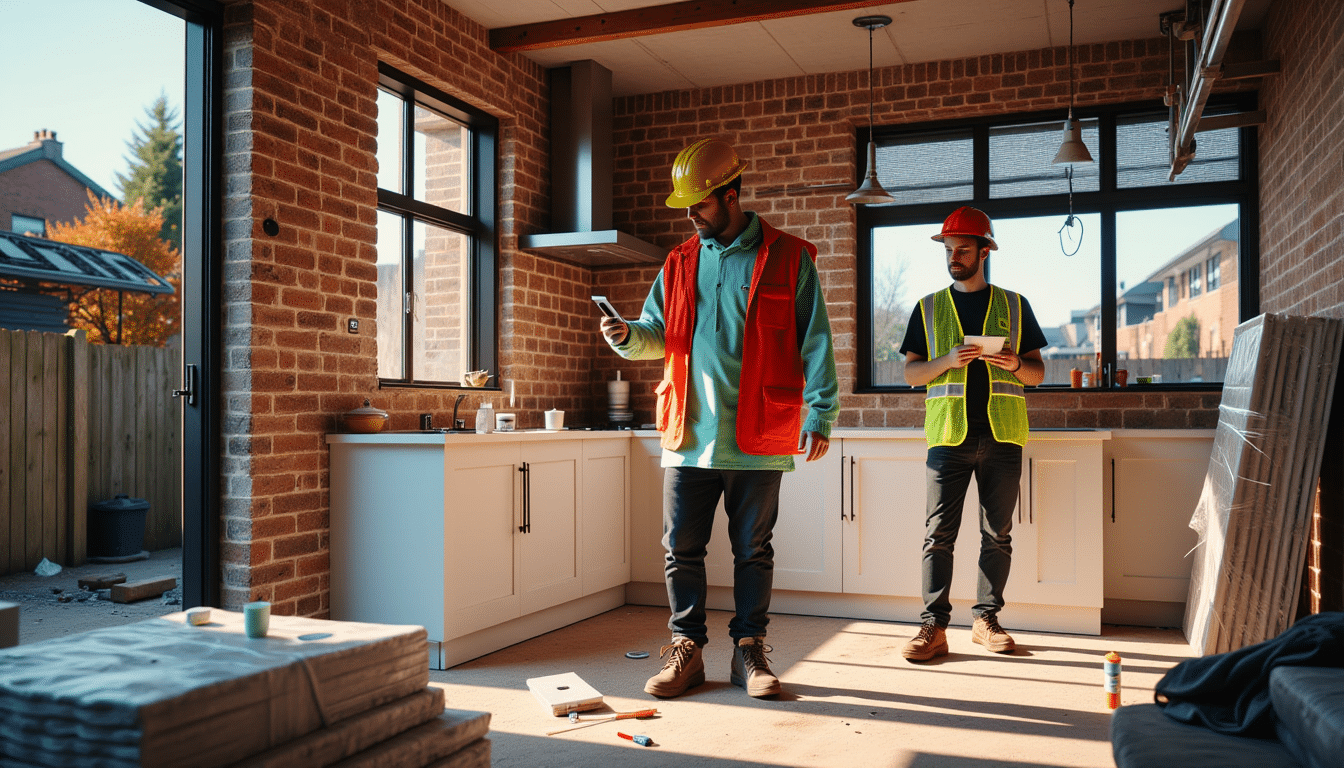Expert Advice Column: Planning a Renovation Budget for Your UK Property in 2025
Renovating a UK property in 2025 can be both exciting and a bit overwhelming. Costs are climbing, thanks to growing demand for better energy performance, modern kitchens and bathrooms, and the need to bring ageing homes up to today’s standards. Whether you’re upgrading a Cumbria cottage or refreshing a mid-century semi in Birmingham, planning your renovation budget carefully is the single most important step to avoid expensive surprises.
Here’s how to take control of your home renovation budget – and make every pound count.
Start with a Detailed Scope (Right Down to the Door Handles)
I always tell clients – don’t just think in rooms, think in tasks. Every successful renovation starts with a comprehensive breakdown of the work involved, including everything from structural work and rewiring to your choice of switch plates and tap fittings. The more detail you capture upfront, the more accurate your budget will be.
It’s worth sitting down and mapping out the full scope in a room-by-room list. Include fixtures, surface finishes, paint, flooring, hardware – and yes, even the brushed brass handles you’ve saved three times on Pinterest. Knowing these elements in advance makes for clearer communication with contractors and lets you compare quotes on a level playing field.
Get at Least Three Quotes from Trusted UK Contractors
There’s no shortcut around this one – get multiple quotes. Prices can vary wildly, not just by region but by practices and materials used. And with renovation expenses continuing to rise, choosing your contractor carefully is a huge part of sticking to budget.
When comparing quotes, don’t just look at the bottom line. Review specifications, timeframes, what’s included or excluded (skip over unclear allowances), and how contingency is treated. You’ll find more tips on finding reliable UK contractors in our dedicated guide, but my rule of thumb is: never hire on price alone. Hire on clarity and confidence.
Build a Renovation Budget Spreadsheet – Now Add 10-15% Contingency
You don’t need fancy software – a clean spreadsheet will do. Group your spend by category: demolition, joinery, plumbing, fixtures, finishes, and so on. This will help keep real-time tabs on your outgoings and give you somewhere to log quotes and invoices.
And whatever your estimated total is, add at least a 10-15% contingency. In over 25 years of consulting, I’ve never seen a project where nothing unexpected cropped up: woodworm in floor joists, mysterious chimney flues, rising material costs – all of it can blindside you. Budgeting for the unknown is one of the most effective renovation budgeting tips you’ll ever take on board. For more guidance, check out our full breakdown on how to budget for a UK home renovation in 2025.
Understand What Drives UK Home Renovation Costs
Several variables affect the cost of renovating your home, some of which are outside your control. Unfortunately, where you live matters. London and the South East are consistently 20-30% more expensive than the North and parts of the Midlands.
Similarly, property type plays a role – for example, older terraces may require more restructuring, while flats come with different constraints (especially leasehold limitations). And of course, specification level drives price too. A basic 3-bedroom home renovation can start around £43,000, but high-end work can easily tip £100,000 or more.
Balance your ambition against what the property needs. Focus on areas that significantly improve the quality and function of the home, like kitchens, bathrooms, and insulation. Prioritising essential work over ‘nice-to-haves’ helps streamline not just cost, but value. If you’re upgrading on a budget, look into space-saving kitchen renovation ideas that can transform your space without breaking the bank.
Invest Where It Counts: High-Impact Rooms and Energy Efficiency
Kitchen and bathroom upgrades are still top of the wish list for UK homeowners – and for good reason. Not only do they radically improve daily life, but done well, they recoup a decent chunk of their value. But don’t just get swept up in showrooms. Stick to your scope and spend where it makes a tangible difference.
That goes double for energy efficiency improvements. More homeowners are factoring in insulation upgrades, double glazing, and air-source heat pumps, thanks in part to increasing energy costs and better grant schemes. Investing here could reduce energy bills long-term and add to your home’s EPC value. For more on this, check out our write-up on energy efficiency in renovations.
Track Your Spend – And Adjust As You Go
No budget ever stays perfectly static. That’s why keeping a live spreadsheet or using a renovation budgeting app can save your sanity. Log purchases, forecasts, paid invoices, and amended quotes. When overspends creep in on one item, you can adjust others before things spiral.
Planning a renovation isn’t just about upfront costs; it’s about ongoing decision-making. Keep revisiting your data, and don’t be afraid to rethink priorities mid-way if needed – perhaps that feature wall can wait, but the roof flashing really can’t.
Final Thoughts from Tom
Having helped dozens of clients through their home improvement journey, I can tell you that budgeting isn’t about knowing exactly what everything will cost – but about knowing how to manage the costs that come your way.
In 2025, with rising material prices and an increasingly climate-conscious housing market, staying financially agile will be your best asset. So plan smart, keep it detailed, and remember: your renovation budget isn’t a fixed number – it’s a proactive tool.
Bonus Tip: Already feeling overwhelmed? Book a pre-renovation consultation with an independent advisor (not just an architect or builder). A second set of eyes can spot missed elements or savings you hadn’t considered.
And once your project’s underway, be sure to explore our latest advice on kitchen and bathroom upgrade ideas – because no matter your budget, excellent design shouldn’t be an afterthought.
Let the planning begin.






